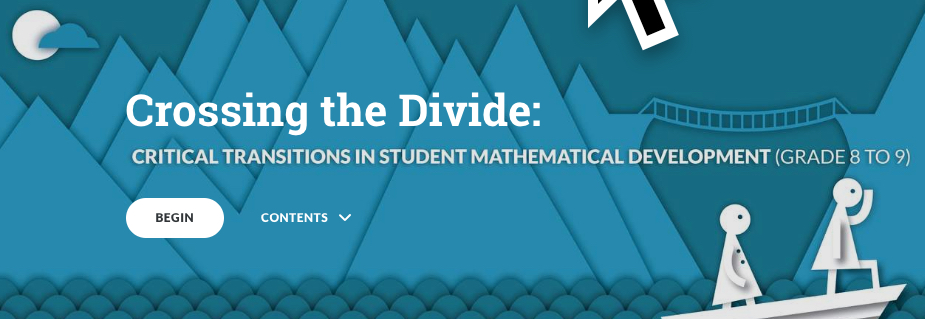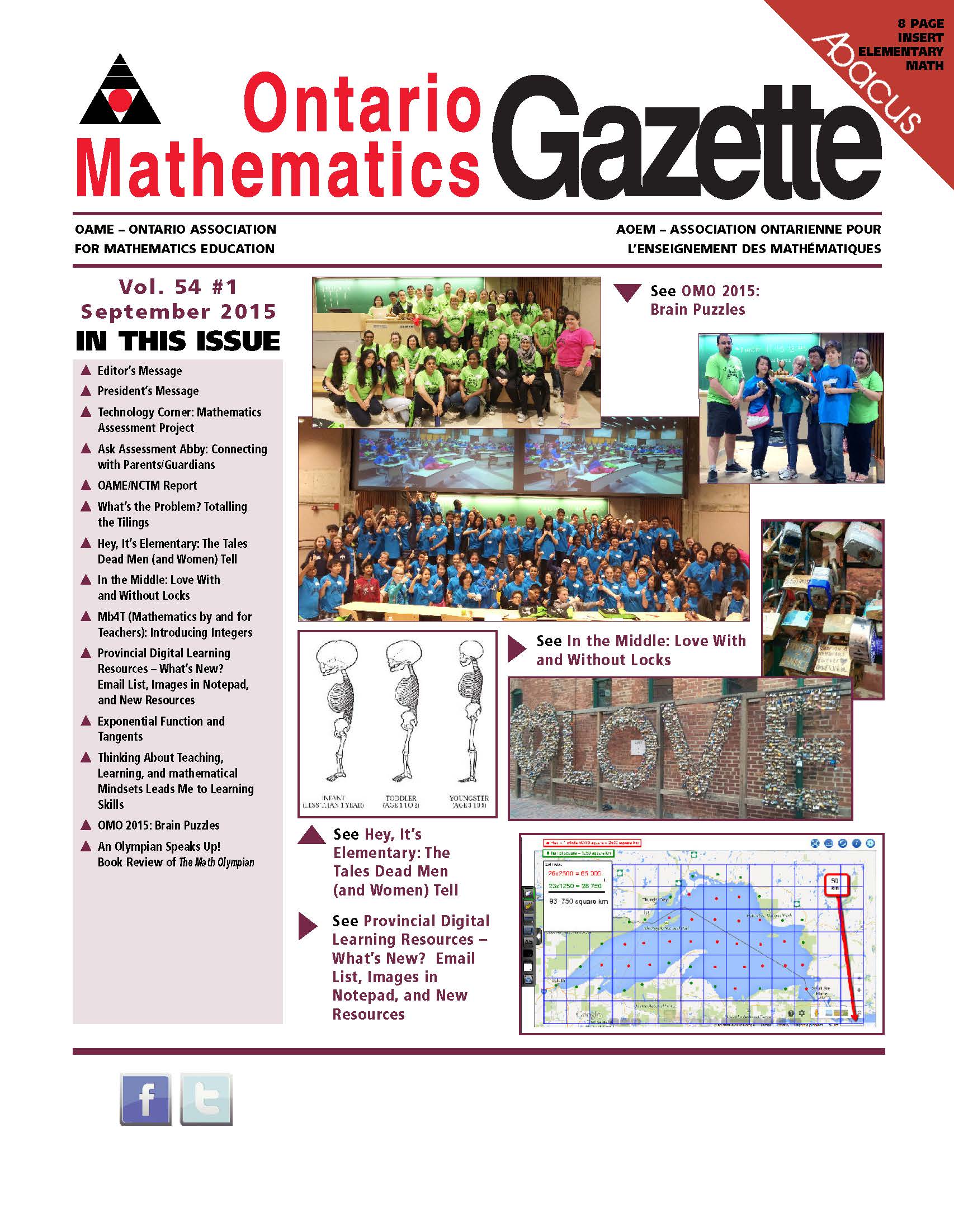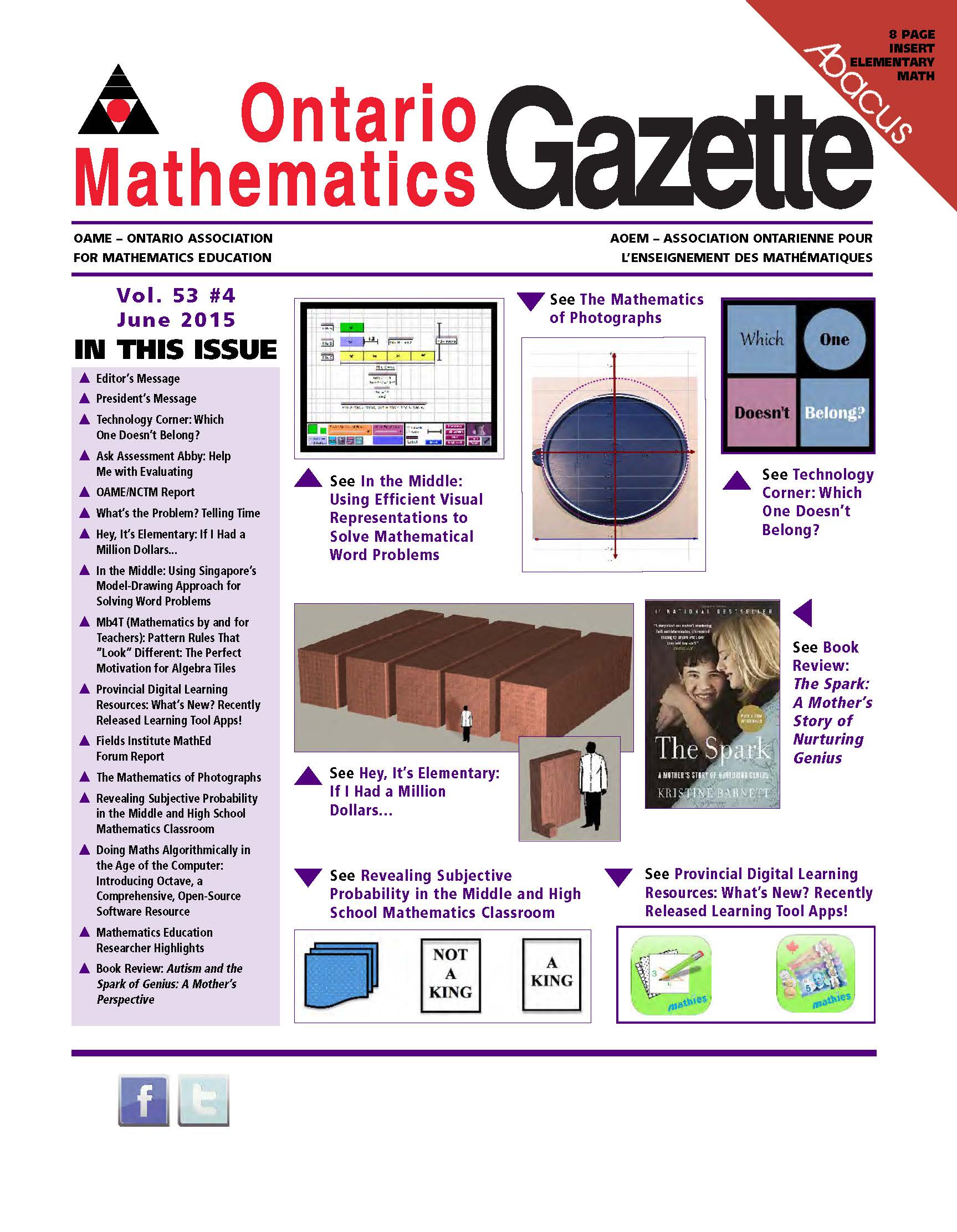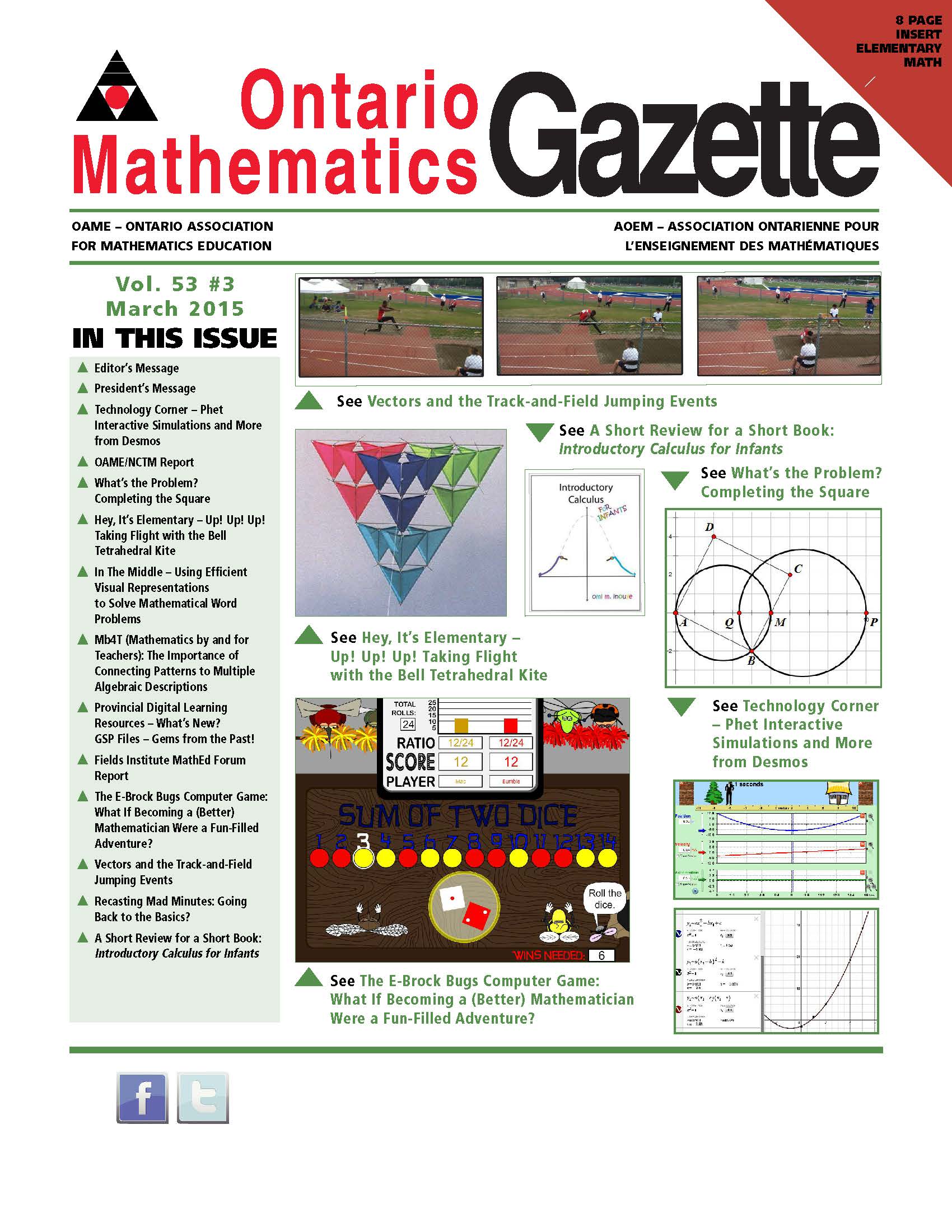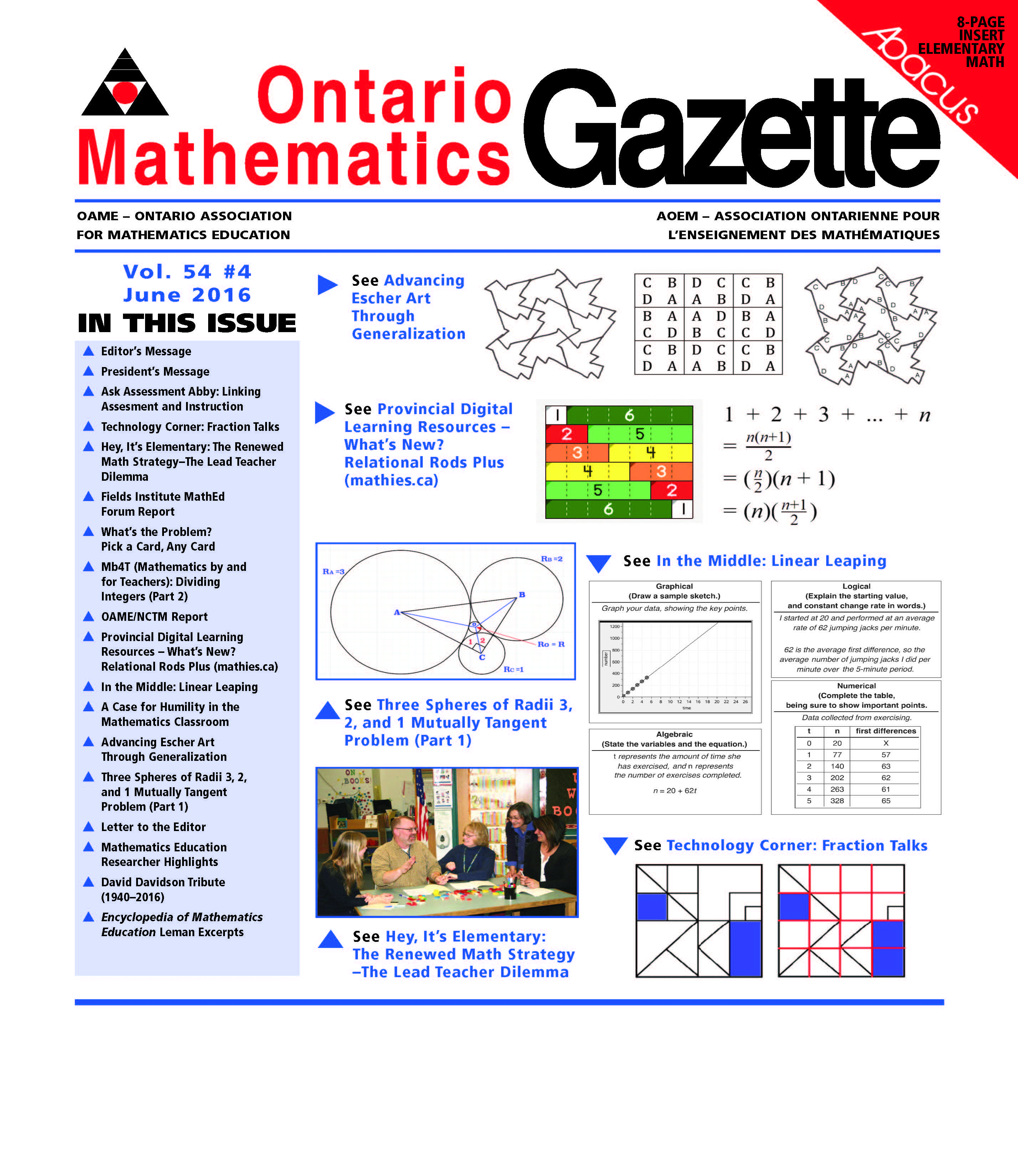
OAME Gazette Volume 54 Number 4 released including three articles, ten regular columns, the elementary school-focused Abacus insert, along with several special features.
In their article entitled A Case for Humility in the Mathematics Classroom, co-authors Ilona Vashchyshyn, Heidi Neufeld, and Egan Chernoff discuss the three characteristics of humility (a secure, accepting identity; emotional resilience; and openness to new information), two related classroom vignettes, and a series of reflections on why and how this virtue should characterize effective mathematics teaching and learning contexts.
Nippissing University’s B.Ed. mathematics instructor Tim Sibbald, and B.Ed. candidate Miranda Wheatstone have collaborated on an intriguing article, Advancing Escher Art through Generalization, that extends the problem-solving component of Escher’s famous tessellations and illustrates that, in terms of tiering instruction, “it facilitates a diverse array of opportunities for examining cases that show very different pattern behaviours.”
Finally, in the first of a 2-part article, a retired teacher, pilot, and skydiver, André Lemaire, explores different mathematical methods for solving the ancient Greece classic “Three Spheres of Radii 3, 2, and 1 Mutually Tangent Problem,” including the use of Pythagoras’s Theorem, Heron’s Formula, trigonometry, Cartesian coordinates, and analytic geometry.
Regular columns include the following highlights: OAME President, Tim Sibbald (his final President’s Message) discusses the NCTM Board of Directors meeting that was recently held in Toronto, which referenced the strengths of, and current challenges faced by, Ontario mathematics education; Todd Romiens (OAME/NCTM Report) highlights NCTM’s new Innov8 Conference designed to specifically help teachers engage struggling learners, and NCTM’s STEM Project (science, technology, engineering, mathematics) which continues to inform the American Congress; Lynda Colgan (Hey, It’s Elementary) discusses the Renewed Math Strategy with special emphasis on what she refers to as the “Lead Teacher dilemma”; Ross Isenegger, Agnes Grafton, Markus Wolski, and Greg Clarke (Provincial Digital Learning Resources) continue explaining the various applications of the mathies.ca Relational Rods resource (e.g., reasoning and proving, even/odd numbers, summing the natural numbers, partitions, and the ability to annotate within the software); and Mary Bourassa (Technology Corner) explores Nat Banting’s website “Fraction Talks” as well as sharing several examples of how others have used this helpful online resource in their mathematics teaching.
Carly Ziniuk (In the Middle) presents an investigation entitled “Linear Leaping” in which linear relationships connected to healthy movement are examined by students using available data and a 4-part template which includes graphical, logical, numerical, and algebraic thinking; Assessment Abby (eponymous) focuses on linking assessment and instruction; Shawn Godin (What’s the Problem?) analyzes two rich problems involving card picking, probability, and the classic Monty Hall Problem with opened/closed doors and hidden prizes; Ann Kajander (MB4T) examines her fourth and final case involving division of integers, that of a positive divided by a negative number; and In the Abacus insert, co-editors Mary Lou Kestell and Kathy Kubota-Zarivnij complete their Volume 54 focus on relational thinking, here focusing on the operation of division.
Volume 54 Issue 4 also includes several special features: (i) a David Davidson Tribute (1940–2016) written by his close friends Dean Murray and Jack Weiner; (ii) a Letter to the Editor by Tim Sibbald which raises awareness about a forthcoming publication and opportunities for participation; (iii) three further Ontario mathematics education researcher profile highlights; and, (iv) and some final excerpts from Lerman’s Encyclopedia of Mathematics Education (2014) regarding a variety of contemporary issues.
It was my great pleasure to attend the NCTM “Building Bridges to Student Success” Conference 2016 in San Francisco, California, and to accept, on behalf of OAME, the Publication Award from NCTM President, Diane Briars, during the annual meeting of affiliate delegates.

